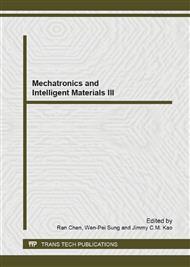p.1462
p.1468
p.1475
p.1479
p.1483
p.1492
p.1496
p.1500
p.1504
Parameters Calibration for Medium Hydraulic Excavator Simulation Model Based on Experimental Data
Abstract:
The authenticity and reasonability of the medium hydraulic excavator simulation model parameters was the foundation to ensure the effectiveness of the simulation model. Based on the bond graph theory, a dynamic simulation model of a medium excavator was established. By the comparison of experimental data and simulation data, the response surface of unknown parameters and the error function of the system model were built. Subsequently, the genetic algorithm was employed to optimize the response surface and obtained optimal value. And then the calibration of the unknown parameters was automatically completed. It was proved that the model simulation curve and with experimental curve fitted better when response surface-genetic algorithm method was used for automatic optimization and calibration of unknown parameters. Furthermore, this method could also function to reduce effectively the number of trials of parameter calibration.
Info:
Periodical:
Pages:
1483-1491
Citation:
Online since:
June 2013
Authors:
Price:
Сopyright:
© 2013 Trans Tech Publications Ltd. All Rights Reserved
Share:
Citation:


